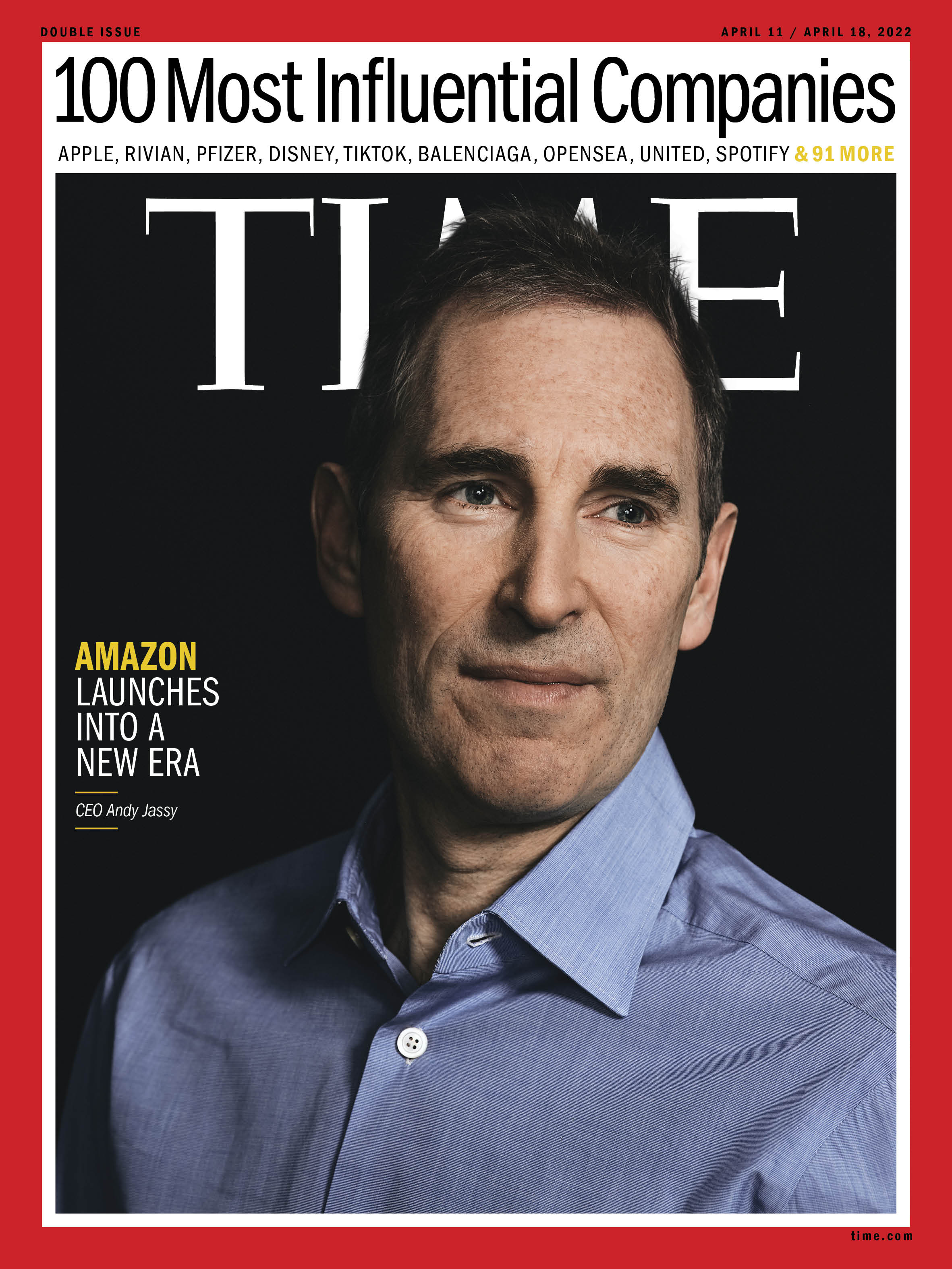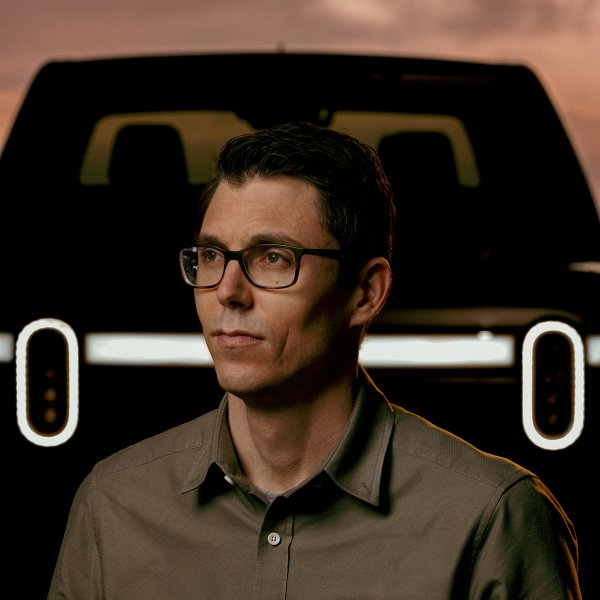Andy Jassy, who speaks in quiet tones and moves through Amazon’s Seattle headquarters in jeans, untucked button-downs, and sneakers, appears to be the polar opposite of his predecessor, who over the years transformed into a larger-than-life billionaire. But now it’s Jassy who is nevertheless managing an ever expanding empire.
With a valuation of $1.7 trillion and a workforce of 1.6 million, Amazon’s reach is nothing short of colossal. It delivers next-day provisions to your doorstep and serves up millions of daily video streams that will soon include live NFL games and a new Lord of the Rings series. Amazon Web Services (AWS)—the biggest cloud computing provider on the planet—powers myriad other companies, including its biggest streaming competitor, Netflix. And then there’s Amazon’s global logistics business, brick-and-mortar stores (including Whole Foods), and a telemedicine service. Not to mention Amazon Gaming and Amazon Music.
What’s next? Where does it stop? Does Amazon make sense as a single company?
Jassy, 54, has been grappling with these questions since taking over as chief executive last summer. Where some may see a chaotic conglomeration of dissimilar businesses, Jassy, Jeff Bezos’ hand-picked successor, says he sees one company, unified by a single purpose, with no end to its potential expansion.

Get a print of the 2022 TIME100 Companies cover featuring Amazon CEO Andy Jassy
“Whether we’re talking about serving consumers or sellers or brand advertisers or developers or enterprises or governments, we have a really strong connective tissue in being Earth’s most customer-centric company,” he said in a virtual fireside chat with employees last July.
Over a 24-hour period in mid-March, the company received a double dose of good news that also pointed to profound challenges ahead. On March 17, Amazon finalized its $8.45 billion acquisition of MGM studios, but the merger is still under review by regulators in Washington, where lawmakers continue to express concerns about Amazon’s size and power in a number of sectors. The following day, Amazon won dismissal of an antitrust lawsuit brought by the District of Columbia, which alleged the company engages in anticompetitive behavior and hurts consumers by blocking sellers on its site from offering better prices elsewhere. The legal and regulatory troubles add to longstanding complaints of poor pay, mistreatment, and even surveillance at Amazon warehouses, issues that are coinciding with unionization efforts across the U.S.
These are the problems on the docket for one of the world’s largest retailers—a company that Jassy joined when it was anything but a behemoth. A former honors student with dreams of becoming a professional athlete, he was fresh out of business school and Amazon was still just a scrappy online bookseller at the time. But he and Bezos shared a competitive drive to do more. In 2003, the pair brainstormed the creation of a cloud computing unit that became AWS. With Jassy as its leader until last summer, AWS grew into the company’s most profitable business.
Now, as Jassy considers expansion into new arenas, the possibilities seem to animate him. “There are businesses that we just haven’t started yet that have, I think, a real opportunity to change what’s possible,” he tells TIME. “Think about our low Earth orbital satellite Kuiper, providing connectivity to the hundreds of millions of people that have no connectivity and can’t participate in the internet … or what we’re doing with Zoox with autonomous driving ride-hailing. There are just so many opportunities.” Jassy recently spoke to TIME about what drives him–and Amazon–to keep reaching.
What’s it like taking over for such an iconic founder and leader? And how are you able to put your own stamp on how the company is run?
I have an incredible amount of respect for Jeff, but I haven’t thought of this opportunity in the context of following an icon or needing to put a stamp on the CEO role. In the context in which I started in the role, we were in the middle of a global pandemic, and whatever role we thought Amazon played in the world pretty significantly changed, with respect to getting PPE, to getting food, clothing, all sorts of items people needed to be comfortable. We grew two to three times faster than we expected because so many things were shut down. We built a fulfillment-center footprint over the first 25 years of Amazon that we had to double in 24 months. So, you don’t expect to do that and you don’t plan to do that.
The company touches our lives in so many ways, and you’re in so many businesses. How do you define what Amazon is right now?
We exist to make customers’ lives better, and we think about it as needing to relentlessly invent to make that so. When I arrived at Amazon in 1997, we sold books. But it was clear from the start that we had the opportunity to help customers accomplish a lot more than just finding and discovering great books. If there’s a customer experience that, if we fixed it, could be a large, meaningful business for the company, we will pursue it. Even if it has very little to do with our existing businesses.
OK, but how do you manage such a big, sprawling company?
We operate in a decentralized fashion where there’s a lot of autonomy and a lot of ownership. It starts with having great leaders. And then I think a big piece of a company scaling—not just in size, but across a lot of geographies and customer experiences—has to do with the culture inside the company. You can’t flip a switch and have that happen.
How do you get speed out of a big organization like this?
Speed is not preordained. It’s very much a leadership decision and a cultural decision. There are a few ways that you can speed [up]. The first is if you organize in a decentralized fashion where businesses don’t have to constantly be coordinating with one another.
The second thing is making sure that you identify which are the one-way-door decisions and which are the two-way-door decisions. The two-way-door decisions mean that if you get it wrong, you can walk back through that door and just stop doing it. And there are many more two-way-door decisions than there are one-way-door decisions. The one-way-door decisions are: if you get this wrong, it is either impossible or very difficult to walk back. Those you have to go a little slower on, but those are much fewer of the decisions that you make.
In a decentralized culture, let the team know that they have the green light to go quickly on two-way-door decisions. And then for the few one-way-door decisions, find a way to make those decisions fast too.
A weekly newsletter featuring conversations with the world’s top CEOs, managers, and founders. Join the Leadership Brief.
You’ve talked in the past about how this relentless focus on the customer means that sometimes Amazon isn’t focused on competitors. But there are competitors of yours who sometimes have complaints about how Amazon behaves in the marketplace, for instance, by reproducing products and selling them to consumers at cheaper prices. How do you square that with your principles?
We have a marketplace with about 2 million sellers, many of whom are small, medium-sized businesses. If we look at the feedback we get, it’s much more positive than it is negative. We’ve tried to be thoughtful in the areas that we choose to have private-label items, and they’re typically the ones that our customers are really pushing us to have additional selection and lower cost. But by and large, I think we have a very healthy relationship with our sellers. I think they feel like their businesses are more successful and larger because of their presence on Amazon. However, we are far from done improving the lives of our sellers. And we always take whatever feedback we get to heart.
Something I ask almost everyone in your position these days is about this growing trend in C-suites and boardrooms toward “conscious capitalism.” Is this something you think about as you continue to develop Amazon’s company culture?
It’s a different world today than it was five, 10, 20 years ago. Employees expect their companies to have opinions on a broad array of issues that in the past they probably didn’t expect their companies to have opinions on. I think it’s healthy.
As you become a larger company with a larger presence in the communities in which you operate, as you scale, I think you have a bigger responsibility to be aware of what your presence is and to find ways to give back. That’s something that we feel strongly about. “Are we doing enough? Are we giving back enough? Are we doing enough given our scale?” to be true to this leadership principle. I don’t think that’s going away anytime soon.
Edited and condensed for clarity
More from TIME
- Cybersecurity Experts Are Sounding the Alarm on DOGE
- Meet the 2025 Women of the Year
- The Harsh Truth About Disability Inclusion
- Why Do More Young Adults Have Cancer?
- Colman Domingo Leads With Radical Love
- How to Get Better at Doing Things Alone
- Michelle Zauner Stares Down the Darkness






